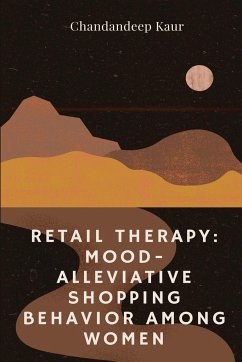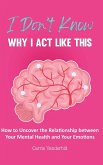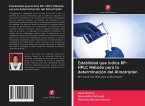"Retail Therapy" refers to the act of going on a shopping spree to alleviate negative mood. It is a consumption behavior that is engaged in to cope with stress or depression, caused by some negative event that a person is either unwilling to or unable to tackle directly. Consequently, she (/he) uses shopping or buying as an indirect means to reduce the tension and feel relaxed. Shopping activity works as a coping mechanism that generates happiness in short-run, and enhances psychological well-being in the long-run. Different types of therapeutic benefits offered by shopping include- distraction, escape, indulgence, relaxation, sensory stimulation, social connection etc. As per the existing literature and based on the survey reports of various expert agencies' websites (e.g. ebates.com, dendyneville.co.uk, addictionexperts.co.uk, creditkarma.com, etc.), it has been found that the usage of shopping for therapeutic reasons is more common in western countries like U.S. and U.K. This is mainly because of the developed retail market in these countries, which offers wider product choice to shoppers as well as gives them an entertaining and pleasurable shopping environment. However, the adoption of retail therapy in less developed or developing countries, has so far, not been much acknowledged. The research in this field has also been limited in these countries. This book is based on a study that has been an effort in this direction. It has advanced the knowledge regarding usage of retail therapy among shoppers in India, which is a country with a different kind of retail environment and cultural background as compared to the developed countries. Another important observation, based on the previous literature, has been that women engage more in retail therapy as compared to men. They feel an emotional connection with shopping and believe that shopping can help them in overcoming any kind of stress that they experience in their day-to-day. Following this, the present research has also been focused on women shoppers only. The study begins with a general understanding of the usage of shopping as a coping mechanism by the Indian women and then further determines different factors that encourage the adoption of such behavior. The specific focus has been on one's personal characteristics that can help predict indulgence in retail therapy. Apart from this, the therapy shopping trip behavior of those women, who actually engage in retail therapy, has also been examined. This book deals with the following topics: 1. Exploring different types of coping strategies/activities adopted by Indian women to overcome negative mood (with special focus on determining the usage of shopping for coping).2. Analyzing the retail therapy behavior of women. 3. Assessing the influential impact of personal characteristics on retail therapy behavior of women.4. Analyzing the retail therapy trip behavior of women therapy shoppers.








